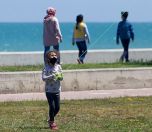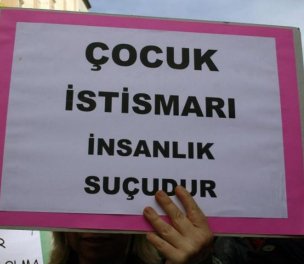Click to read the article in Turkish
Today is November 20 World Children's Day, which marks the 31st year since the United Nations (UN) Convention on the Rights of the Child was adopted by the UN General Assembly. While the Convention entered into force on September 2, 1990, Turkey signed it in 1995.
Even though some steps have been taken about children's rights in Turkey, several children still cannot access their rights in the country.
The statistics periodically shared by the Turkish Statistical Institute (TurkStat), Turkey's government agency commissioned with producing official statistics on the country, also manifest this, albeit partly.
According to TurkStat, children account for 27.5 percent of the population.
Here are some other TurkStat statistics on child labor, child marriage, juveniles pushed into crime, nourishment and schooling...
POPULATION
As of the end of 2019, Turkey's population was 83 million 154 thousand 997 people; 22 million 876 thousand 798 of them were children.
The child population aged 0-17 according to the UN definition accounted for 48.5 percent of the entire population of Turkey in 1970; this share dropped to 41.8 percent in 1990 and 27.5 percent in 2019.
The city with the highest child population rate was Urfa with 45.8 percent. Urfa was followed by Şırnak with 43.5 percent and by Ağrı with 41.9 percent. As for the cities with the lowest child population rate, they were Dersim with 17.1 percent, Edirne with 17.9 percent and Kırklareli with 18.5 percent.
According to mortality statistics, while Turkey's infant mortality rate was 11.1 per thousand in 2014, it dropped to 9.3 per thousand in 2018.
CHILD LABOR
Having failed to do its "Child Labor Force Survey" for nearly seven years, the TurkStat announced the results of the survey in April 2019. The number of working children at the ages of 5-17 are 720 thousand. However, this number does not cover Syrşan child workers.
While no child worker below the age of 5 was detected by the TurkStat, the official statistics of the agency showed that 4.4 percent of children at the ages of 5-17 were working. While 79.7 percent of the working children were aged 15-17, 15.9 percent were aged 12-14 and 4.4 percent were aged 5-11.
When considered by gender, 70.6 percent of working children were boys while the remaining 29.4 percent were girls.
JUVENILE PUSHED INTO CRIME
The number of incidents involving juveniles received into security units was 511 thousand 247 in 2019, marking an increase of 5.8 percent when compared to the figures announced in the previous year.
50.1 percent of these juveniles were in the 15-17 age group and 25.2 percent were in the 12-14 age group while 24.7 percent of juveniles were under the age of 11. In 2019, 65.4 percent of juveniles received into security units were boys while 34.6 percent were girls.
SCHOOLING
According to the statistics of the Ministry of National Education, the schooling rate at the age of five was 67.2 percent in the 2015/-16 school year and 75.2 percent in the 2018/'19 school year.
The schooling rate in secondary schools was 93.3 percent in the same period. While it was 92.9 percent for girls, it was 93.6 percent for boys.
CHILD MARRIAGE
According to marriage statistics, while the proportion of legal child marriages for girls aged between 16 and 17 within the legal total marriages were 8.1 percent in 2009, it declined to 3.1 percent in 2019.
When this proportion was analyzed by provinces, it was seen that the province with the highest proportion of the child marriages for girls was Ağrı with 13.2 percent in 2019. This province was followed by Muş with 13 percent and Kars with 10.6 percent. The provinces with the lowest proportion of child marriages for girls within total marriages were Tunceli with 0.2 percent, Bayburt and Rize with 0.7 percent, Trabzon with 0.8 percent.
NOURISHMENT-OBESITY
According to 2018 results, malnutrition rate among boys and girls aged younger than five were 11 percent and 8.4 percent respectively. While 9.3 percent of boys at this age group was obese, this rate was 6.8 percent for girls younger than five.
While 1.7 percent of boys were extremely thin, this rate was 1.6 percent for girls. (AÖ/SD)







